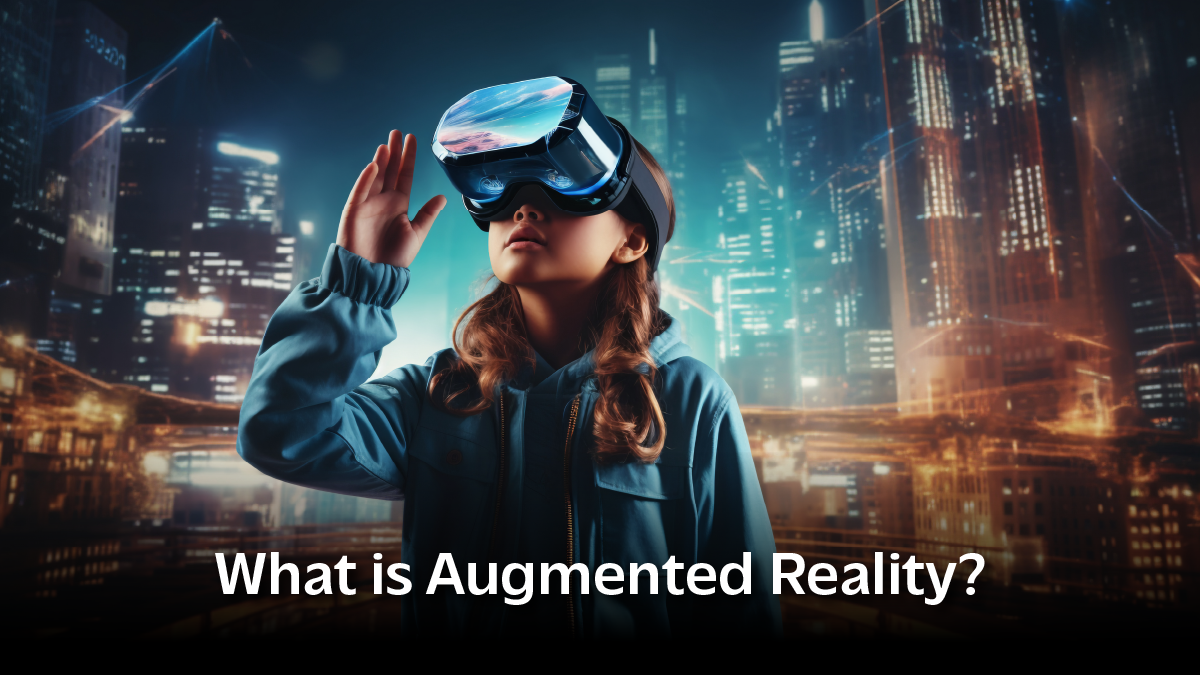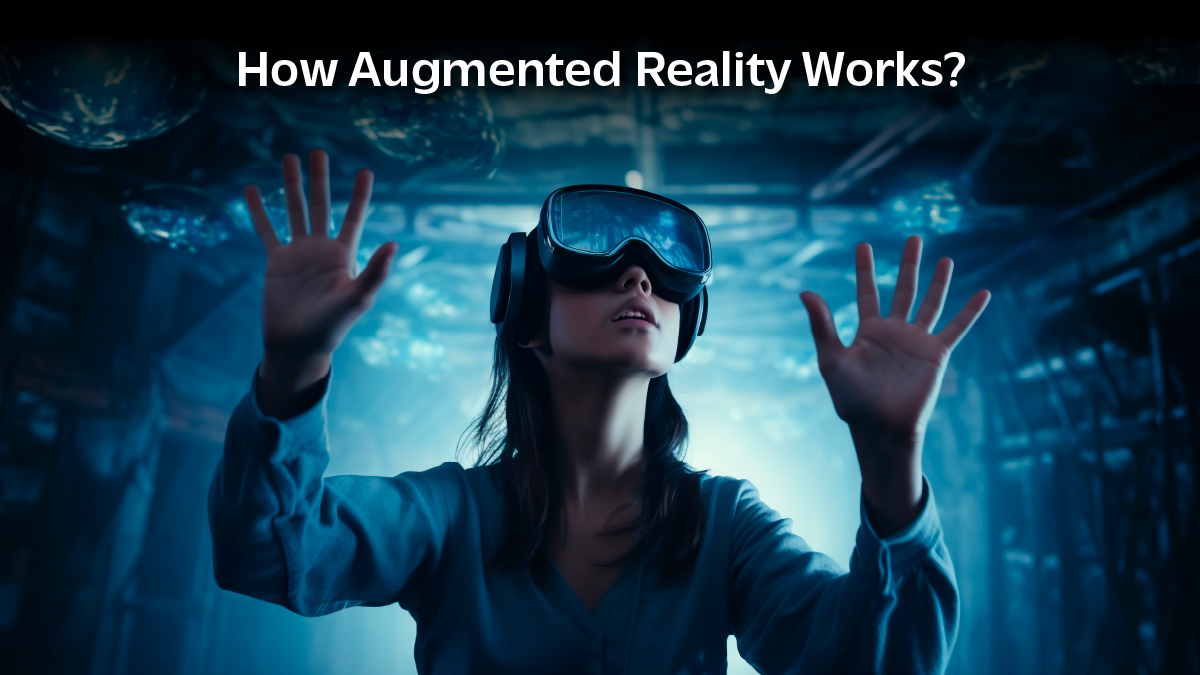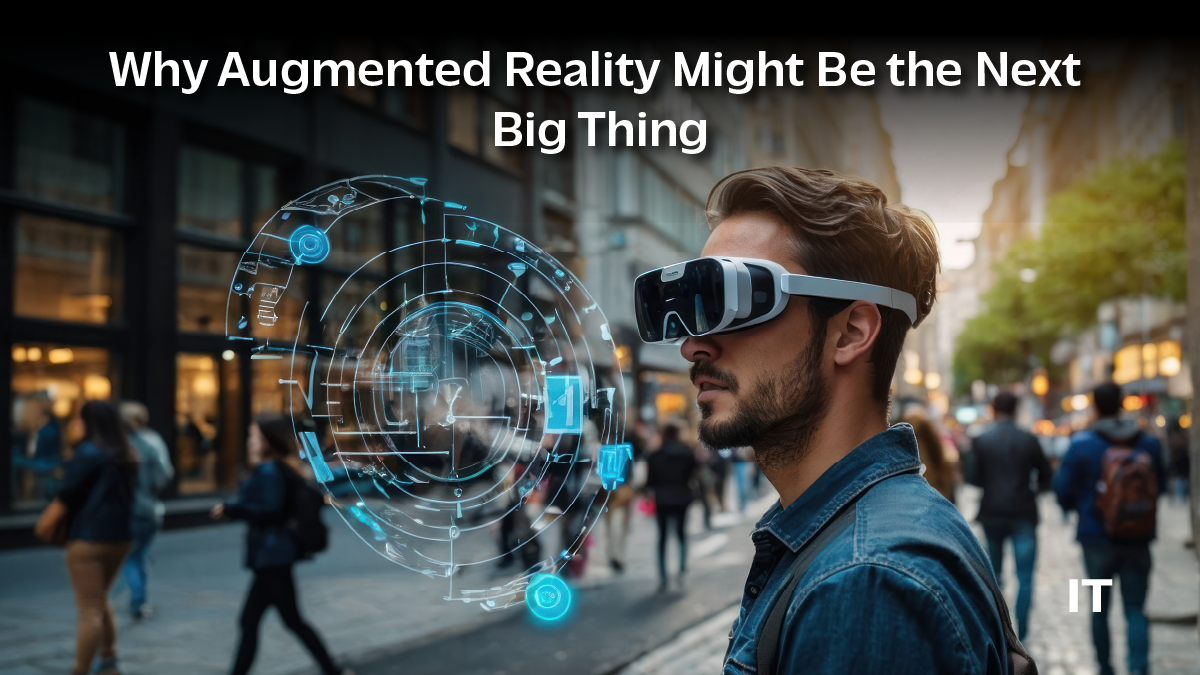Augmented Reality (AR) is a term familiar to many, as it increasingly finds applications across various fields, including gaming and healthcare. Often, when people think of AR, they imagine bulky glasses. However, its use and form are much more diverse and integrated into everyday technology than one might expect.
AR transforms how we experience everything by overlaying digital information onto real-world environments, As businesses and consumers increasingly adopt this technology, AR is poised to revolutionize various aspects of daily life, making it a compelling area of exploration and investment. Let’s see how.
What is Augmented Reality?
 Augmented reality (AR) is a computer-generated digital image superimposed over the physical environment. It improves the user’s sense of reality by superimposing digital content over actual spaces and things.
Augmented reality (AR) is a computer-generated digital image superimposed over the physical environment. It improves the user’s sense of reality by superimposing digital content over actual spaces and things.
Augmented reality technology can be used to visually alter natural environments (physical world) or provide consumers with more information. When digital information is superimposed on a device, it creates an immersive experience that modifies the user’s view of the real world.
Food delivery giants Swiggy and Zomato introduced 3D AR versions of their menu items, allowing customers to view the food products in real time.
This is just one example, multiple companies are adopting AR techniques to attract customers. This of course stands true for the gaming industry as well. A notable invention is the RayNeo X2 AR and AI glasses by TCL. These offer an ultra-smart, immersive experience with advanced audio, cinematic visuals, and a built-in AI assistant.
Not just that, augmented reality not only enhances driving safety but also has the potential to save lives. Economist reveals that AR technology provides drivers with real-time, essential information displayed on windshields or other screens. This improves situational awareness and helps reduce the risk of accidents.
Also Read: Augmented Reality in Healthcare: A Comprehensive Guide
How Augmented Reality Works?
 Digital Content Overlay: Augmented Reality (AR) overlays digital content, such as images, videos, graphics, or information, onto the real-world environment of the user. This content is typically viewed through devices like smartphones, tablets, or smart glasses.
Digital Content Overlay: Augmented Reality (AR) overlays digital content, such as images, videos, graphics, or information, onto the real-world environment of the user. This content is typically viewed through devices like smartphones, tablets, or smart glasses.- Camera Capture: AR depends on the device’s camera to capture the user’s surroundings in real-time. The camera records the physical environment and sends this video feed to the AR software or application.
- Computer Vision: The AR software utilizes computer vision algorithms to analyze and interpret the captured video feed. It identifies objects, surfaces, and features in the real world, enabling it to accurately position and anchor digital content within the user’s environment.
- Digital Twin: A fundamental concept in AR is the use of a “digital twin,” which is a virtual representation of a real-world object or environment. By creating a digital twin, AR can accurately overlay digital content onto specific objects or locations in the real world.
- Real-Time Rendering: After the AR software understands the user’s environment and the placement of digital content, it renders these digital elements in real-time. This ensures that the digital content is seamlessly integrated into the user’s view, appearing as though it is part of the real world.
- User Interaction: Users can interact with the digital content overlaid in their environment. This interaction may involve gestures, touch, voice commands, or other input methods, depending on the AR application or device being used.
- Display: The final step is presenting the augmented view to the user. This can be achieved through the device’s screen, such as a smartphone or tablet, or through specialized AR glasses that offer a more immersive experience.
3 Use Cases Why Augmented Reality Could Be the Next Big Think
Here’s an in-depth look at why AR might be the next big thing, supported by relevant use cases and credible sources.
1. Enhanced Consumer Experiences
Retail and Shopping: AR is reshaping the retail landscape by providing customers with interactive and immersive shopping experiences. For instance, IKEA’s AR app, IKEA Place, allows users to visualize how furniture and home decor items will look in their own homes before making a purchase. This technology not only helps in reducing purchase hesitation but also enhances customer satisfaction.
Virtual Try-Ons: Companies like L’Oréal and Sephora use AR enabled virtual try-ons for beauty products. This feature allows customers to see how makeup products will look on their faces in real-time, making the shopping experience more personalized and convenient.
2. Revolutionizing Education and Training
Interactive Learning: AR can make learning more engaging by providing interactive and immersive educational experiences. For example, AR platforms like Google Expeditions allow students to take virtual field trips and explore historical sites, outer space, or the human body in 3D. This hands-on approach enhances understanding and retention of complex subjects.
Medical Training: In healthcare and medical education, AR is used for training purposes by simulating surgeries and medical procedures. Platforms like Touch Surgery offer AR-based surgical simulations that provide medical students and professionals with realistic practice environments, improving their skills and confidence.
3. Advancing Navigation and Travel
Enhanced Navigation: AR is transforming navigation by providing real-time, contextually relevant information. For instance, AR navigation apps like Google Maps AR mode overlay walking directions and points of interest onto the user’s view of the street, making it easier to navigate unfamiliar areas (source: Google Maps).
Travel Guides: AR enhances travel experiences by offering interactive guides and information about landmarks. Apps like AR City provide tourists with real-time data about nearby attractions, historical facts, and navigational aids, enriching their travel experience.
Winding Up
The potential of augmented reality technology to revolutionize several industries is becoming increasingly clear. AR is poised to play a major role in our digital future, with applications ranging from enhancing the consumer experience and transforming education to improving navigation and providing life-saving features for drivers.
The rapid adoption of AR across a wide range of industries demonstrates both its adaptability and the growing appreciation of its benefits. AR is expected to have an even greater impact on the way we interact with the world as more businesses and consumers embrace the technology.

































